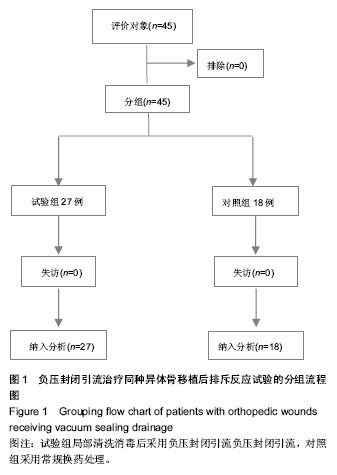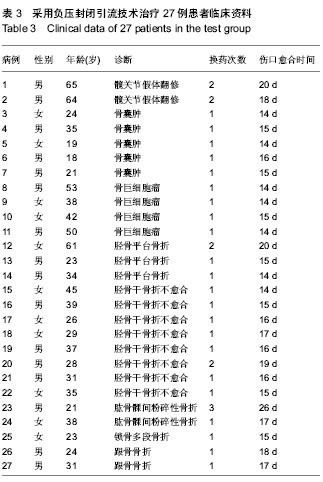| [1] Czitrom AA,Axelrod T,Fernandes B.Antigen presenting cells and bone allotransplantation.Clin Orthop.1985;197:27-31.
[2] Horawitz MC,Friedlaender GE.Induction of specific T-cell responsivenes to allogemeic bone.J Bone Joint Surg Am. 1991;73(8):1157-1168.
[3] 陈实.移植免疫学[M].武汉:湖北科学技术出版社,1998:89-92.
[4] Phiatanakul WP,Vande Vord PJ,Teitge RA,et al.Immune resonse in patients receiving fresh osteochondral allografts. Am J Orthop (Belle Mead NJ).2004;33(7):345-488.
[5] 封兴华,丁鸿才,刘斌.深低温冷冻对降低异体骨抗原性作用的实验研究[J].实用口腔医学杂志,1995,11(4):248-251.
[6] 陆军,吴苏稼,施鑫.同种异体骨移植的免疫反应[J].中国矫形外科杂志,2002,9(4):388-391.
[7] Wingenfeld C,Egli RJ,Hemfing A,et al.Cryoreservation of osteochondral allografts: direthyl sulfoxide romotes angiogenesis and immune tolerance in mice. J Bone Joint Surg.2002;84:1420-1429.
[8] Guo S,Feng W,Jia Y.Lyophilized small-segment allogeneic bone in repairing bone defect due to benign bone tumor and tumor-like lesions after resection and curettage. Zhongguo Xiu Fu Chong Jian Wai Ke Za Zhi.2007;21(8):789-792.
[9] Buecker PJ Gebhardt MC.Are fibula strut allografts a reliable alternative for periarticular reconstruction after curettage for bone tumors. Clin Orthop Relat Res. 2007; 461:170-174.
[10] Smrke D,Gubina B,Domanoviç D,et al.Allogeneic platelet gel with autologous cancellous bone graft for the treatment of a large bone defect.Eur Surg Res. 2007;39(3):170-174.
[11] Preston RD,Meinberg TA,Payne JB,et al.Inflammatory mediator release following bone grafting in humans: a pilot study.J Clin Periodontol.2007;34(9):797-804.
[12] Constantinos K,Stephanie B,Christopher SA,et al. Bacterial Colonization of Bone Allografts: Establishment and Effects of Antibiotics. Clin Orthop Relat Res.2010; 468:2113-2121.
[13] 张旗,建强,罗乐宣,等.冷冻干燥60 钴灭菌表面脱钙异体骨移植的研究[J].中华实验外科杂志,1999,16(4):313-314.
[14] 张春喜.大量同种异体骨(段)应用于大块骨缺损后激素的应用[J].中国医疗前沿,2008,3(20):7-9.
[15] Fleischmann W,Strecker W,Bombelli M. Vacuum sealing as treatment of soft damage in open fractures. Unfallchirurg. 1993;96(9):488-492.
[16] 裘华德,王彦峰.负压封闭引流技术介绍[J].中国实用外科杂志, 1998,18(4):233-234.
[17] 李钊伟,杨杰山.负压封闭引流技术在治疗骨科复杂创面的治疗进展[J].青海医药杂志,2011,41(5):92-94.
[18] 王虔.负压封闭引流术在骨科的应用进展[J].辽宁医学院学报, 2012,33(1):91-93.
[19] 张一,田晓滨,韩伟,等.负压封闭引流技术在四肢开放性骨折并皮肤软组织缺损中的应用[J].贵州医药,2008,32(12):1086-1088.
[20] 陈林.负压封闭引流技术在四肢开放性骨折并皮肤软组织缺损中的应用[J].临床医学, 2010,30(8):27-28.
[21] 蒋国群,胡永才,周海洋,等.负压封闭引流技术辅助下游离植皮修复骶尾部压疮疗效观察[J].现代医药卫生,2013,29(12): 1861- 1862.
[22] 曲家富,闫荣亮,王良,等.负压封闭引流技术结合肌瓣转移游离植皮治疗小腿及足踝部软组织缺损伴骨外露[J].中华创伤骨科杂志, 2013,15(4):316-319.
[23] Deijkers RL,Bouma GJ,van der Meer-Prins EM,et al.Human bone allografts can induce T cells with high affinity for donor antigens. J Bone Joint Surg Br.1999;81:538-544.
[24] 张培琴,谭家华,王松,等.醋酸强的松龙在同种异体骨移植中的应用[J].山东医药,2010,50(19):53-54.
[25] 王昌建,姚元章.负压封闭引流治疗肢体远端慢性感染及溃疡创面[J].创伤外科杂志, 2005,7(4):306.
[26] Liao Q,Xu J,Weng XJ,et al.Effectiveness of vacuum sealing drainage combined with anti-taken skin graft for primary closing of open amputation wound.Zhongguo Xiu Fu Chong Jian Wai Ke Za Zhi.2012;26(5):558-562.
[27] Ren GH,Li JW,Li RG,et al.Treatment of large circular soft tissue defect in lower extremities with a combination of bridge flaps and free skin graft covered by vacuum sealing drainage.Zhonghua Wai Ke Za Zhi.2012;50(1):39-44.
[28] Li RG,Ren GH,Tan XJ,et al.Free flap transplantation combined with skin grafting and vacuum sealing drainage for repair of circumferential or sub-circumferential soft-tissue wounds of the lower leg.Med Sci Monit.2013;19:510-517.
[29] Cen S,Huang F,Yang T,et al. Early use of vacuum sealing drainage to repair the wound of the injured in Wenchuan earthquake.Zhongguo Xiu Fu Chong Jian Wai Ke Za Zhi. 2009;23(6):657-659.
[30] Stannard JP,Singanamala N,Volgas DA.Fix and flap in the era of vacuum suction devices: What do we know in terms of evidence based medicine?Injury.2010;41(8):780-786.
[31] Zhang L,Quan C,Jiang J,et al.The combined application of dissociate skin flap and vacuum sealing drainage on the defect of the large neck neoplasms after surgical procedures. Lin Chung Er Bi Yan Hou Tou Jing Wai Ke Za Zhi.2012; 26(24): 1113-1135.
[32] Lei J,Li HS,Hao ZM,et al.Mode of debridement, negative-pressure therapy combined with tissue transplantation for treatment of complicated and refractory wounds.Zhonghua Shao Shang Za Zhi.2011;27(6):456-460.
[33] Li RG,Yu B,Wang G,et al.Sequential therapy of vacuum sealing drainage and free-flap transplantation for children with extensive soft-tissue defects below the knee in the extremities.Injury. 2012;43(6):822-828.
[34] Dosluoglu HH,Loghmanee C,Lall P,et al.Management of early (<30 day) vascular groin infections using vacuum-assisted closure alone without muscle flap coverage in a consecutive patient series.J Vasc Surg. 2010;51(5):1160-1166.
[35] Wei D,Wang Y,Yuan J,et al.One-stage operation for pelvis and acetabular fractures combined with Morel-Lavallée injury by internal fixation associated with vacuum sealing drainage.Zhongguo Xiu Fu Chong Jian Wai Ke Za Zhi. 2014; 28(1):38-42.
[36] Zhang WK,Zhang WK,Wang HB,et al.Vacuum sealing drainage and free coupling chain-link posterior tibial artery flap in the reconstruction of degloving injury of propodium. Zhonghua Zheng Xing Wai Ke Za Zhi.2013;29(4): 258-260.
[37] Qu J,Yan R,Wang L,et al.Free dermatoplasty combined with vacuum sealing drainage for the treatment of large-area soft tissue defects accompanied by bone exposure in the lower leg.Exp Ther Med.2013;5(5):1375-1380.
[38] Liu G,Pan SP,Chen XP.Vacuum sealing drainage for the treatment of in postoperative wound disunion after calcaneal fracture.Zhongguo Gu Shang.2012;25(9):782-784.
[39] Guo XB,Li JS,Zhang JF,et al.Application of the vacuum sealing drainage technique combined with skin flap in chronic ulcerative wounds.Zhonghua Zheng Xing Wai Ke Za Zhi.2012; 28(4):270-273. |


